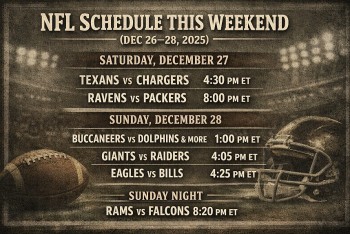Top 10 States With The Cheapest Gas Prices In America
 |
| Top 10 States With The Cheapest Gas Prices In The United States |
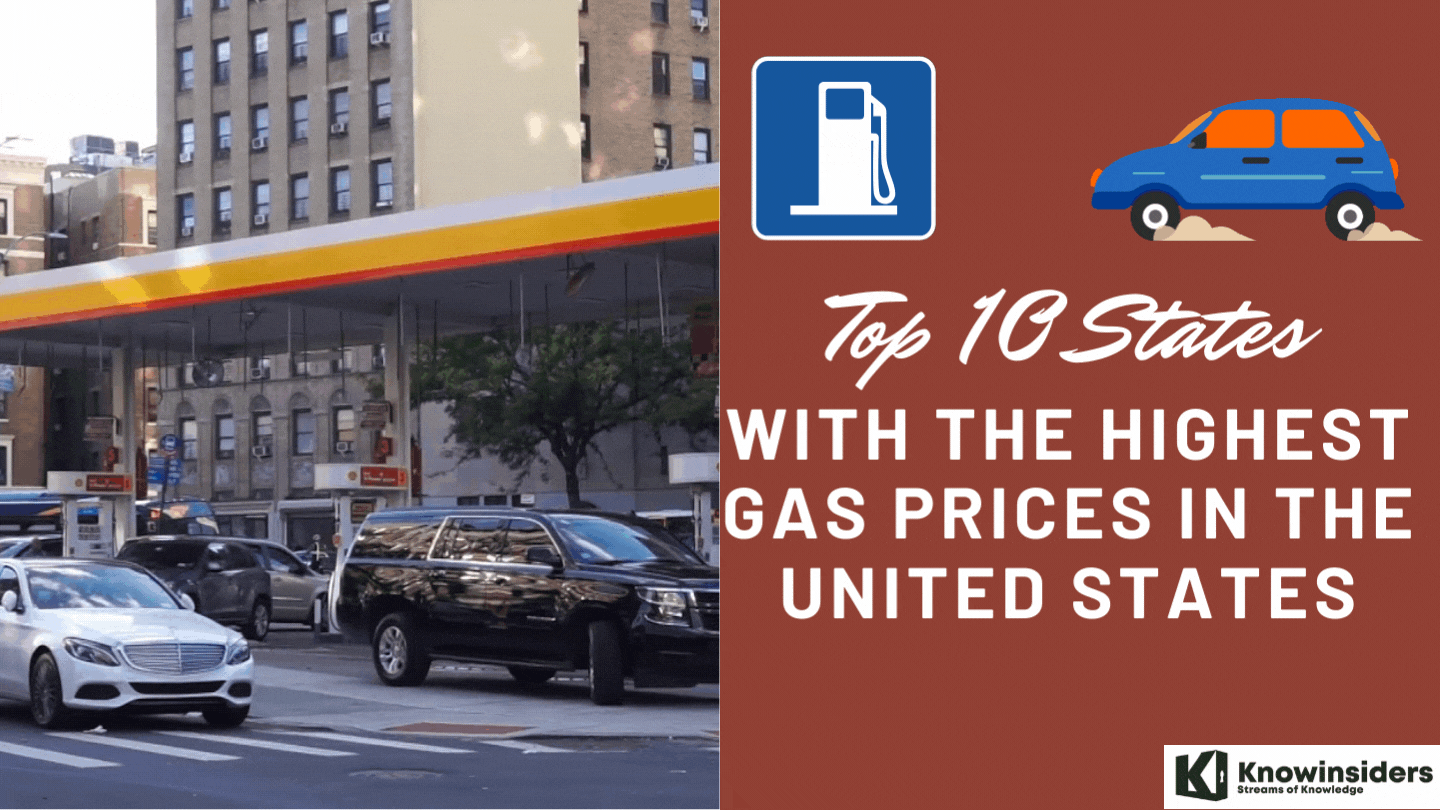 Top 10 States With The Highest Gas Prices In America Top 10 States With The Highest Gas Prices In America Take a look at these states with the highest gas prices in the U.S, considering if you are looking to travel here on your summer ... |
| Table Content |
Summer travel is already starting, and gas prices continue to surge across the country. Since Zutobi's, a driving education website, first U.S. Fuel Index report last summer, gas prices across the country have dramatically increased. In the summer of 2021, the average cost of gas throughout the U.S. was only $3.03 compared to now when prices have risen by 27.88 percent to $4.20. However, this is the national average, and price increases differ between states, meaning that where previously some states were more affordable or more expensive, that may no longer be the case.
Take a look at these 10 states with the cheapest gas prices in the U.S.
List of Top 10 States with the Cheapest Gas Prices in the US
1.Kansas: $3.98
2.Georgia: $3.99
3.Oklahoma: $3.99
4.Missouri: $4.05
5.Arkansas: $4.05
6.Mississippi: $4.07
7.Nebraska: $4.09
8.Minnesota: $4.10
9.North Dakota: $4.11
10. Colorado: $4.11
*****
Read More: Fact-Check: Cooking Oil Can Fuel The Car As Gas Prices Surge
What are the states with the cheapest gas prices you can buy in the U.S?
 |
| Photo: The Wichita Eagle |
1. Kansas
Kansas is a state in the Midwestern United States. Its capital is Topeka and its largest city is Wichita. Kansas is a landlocked state bordered by Nebraska to the north; Missouri to the east; Oklahoma to the south; and Colorado to the west. Kansas is named after the Kansas River, which in turn was named after the Kansa Native Americans who lived along its banks. The tribe's name (natively kką:ze) is often said to mean "people of the (south) wind" although this was probably not the term's original meaning. For thousands of years, what is now Kansas was home to numerous and diverse Native American tribes. Tribes in the eastern part of the state generally lived in villages along the river valleys. Tribes in the western part of the state were semi-nomadic and hunted large herds of bison.
By 2015, Kansas was one of the most productive agricultural states, producing high yields of wheat, corn, sorghum, and soybeans. Kansas, which has an area of 82,278 square miles (213,100 square kilometers) is the 15th-largest state by area and is the 36th most-populous of the 50 states, with a population of 2,940,865 according to the 2020 census. Residents of Kansas are called Kansans. Mount Sunflower is Kansas's highest point at 4,039 feet (1,231 meters).
Kansas has an excellent system of railroads for east-west transport but, except in the east, has less-adequate north-south lines. The same may be said of its highways. Exceptions are the state’s single toll road, the Kansas Turnpike, which runs between Kansas City and the Oklahoma line south of Wichita, and Interstate 135. Although Kansas has more than 350 public and private airports and is served by several airlines, the only major airport in the state with transcontinental service is at Wichita. Kansas City International Airport, in Kansas City, Missouri, is the main airport serving the eastern Kansas–western Missouri region.
Gasbuddy.com, a website tracking gas prices in neighborhoods across the country, says you can find gas for $3.49 a gallon in some corners of Kansas City, Missouri.
Here are the apps that help you find the places that have cheap gas prices in the states:
Gas Buddy
The Gas Buddy app provides several resources to save money. Once you download the app, you can order your free GasBack card. It just has to be linked to a personal bank account. You will also have to provide your driver’s license information to verify your identity.
“GasBack is free money for gas earned from everyday purchases. Earning GasBack is easy and it’s automatically applied at the pump at gas stations nationwide,” Gas Buddy stated.
Once you get the GasBack card, you’ll be able to swipe it to pay for gas. The card will also save you up to $.25 per gallon, according to Gas Buddy.
Additionally, the app will allow you to find the cheapest gas price wherever you are. You can also turn your daily purchases into free gas by shopping in the app.
Upside
Another free app that can save you money at the pump is Upside.
“You’ll pay however you normally do (with a credit or debit card) and cash back will be deposited directly to your Upside account. There’s no limit on how much you can earn – Upside even works with other coupons, discounts, and loyalty programs!” Upside explained.
The app says you can save up to $.25 per gallon.
Here’s how it works, according to Upside:
1.Find local offers on everything from gasoline prices to restaurants and everything in between.
2.Pay as usual: Shop as you would at favorite spots around town, and pay with any credit or debit card.
3.Check in to log your purchase, and be on your way. (If you can’t check in, just snap a photo of your receipt and upload it to the app.)
4.Earn cash back, and cash out whenever you want via PayPal, e-gift card or directly into your bank account.
Upside said you can get cash back at over 45,000 locations nationwide.
Fuel Rewards
Many gas stations, such as Exxon, Shell and Phillips 66, also offer fuel rewards when you use their apps. There are also grocery stores that provide discounts on fuel based on the amount of money you spend.
QuikTrip offers a rewards card. For every $2 in qualified merchandise purchased earn one rewards point. For every 2 gallons of qualified fuel purchased earn one rewards point. Each point earned is worth 1 cent off per gallon. (Non-Qualifying Purchases include alcohol, tobacco, lottery, lotto, postage stamps, gift cards, phone cards, money orders, fuel purchased using rewards points, taxes, event tickets and passes, rentals, other service items and any items prohibited by law.)
Dillons, operated by Kroger, helps you save on fuel every time you shop with their Shopper’s Card. For every $1 you spend, earn one fuel point. Plus, earn points on gift cards, pharmacy and Fred Meyer Jewelers, and even an online order to ship.
5 Tips For Fuel Efficient Driving In Kansas
TAKE CARE OF YOUR TIRES
Most drivers (especially new drivers) don’t understand the importance of good tires. These brave pieces of rubber are what separate your car from the road. Keeping them properly inflated and changing them whenever the tread goes is very important to achieving your maximum gas mileage. Well-maintained tires have less contact with the ground and create less friction. With good tires, you’ll fly down the road!
BRAVE YOUR COMMUTE WITH A FRIEND
Yes, we’ve heard it many times before, but carpooling is simply one of the most effective ways to cut down on gas and harmful exhaust. It may not always be convenient, but think of all the money you’ll save! It may be worth a little inconvenience. Let’s face it; your daily commute isn’t fun. It would be more bearable with a friend of coworker in the passenger seat.
FOLLOW THE SPEED LIMIT
Flooring it once the light turns green is a good way to waste gas. So is driving 10 or more miles over the speed limit. In suburban areas, traffic lights more or less how quickly you get from point A to point B. Not to mention, it’s also safer to drive the limit. So let off the pedal, and save some gas!
FUEL INDUCTION SERVICE
Over time, you might notice that your car isn’t getting the gas mileage it used to. It’s normal for this to happen as a car ages. However, part of this loss in fuel efficiency is because fuel and air deposits that build up in the engine. We can remove those deposits with our fuel induction service so your engine doesn’t have to work as hard.
Related: Top 10 Cheapest Gas Stations in California You Keep in Mind
2. Georgia
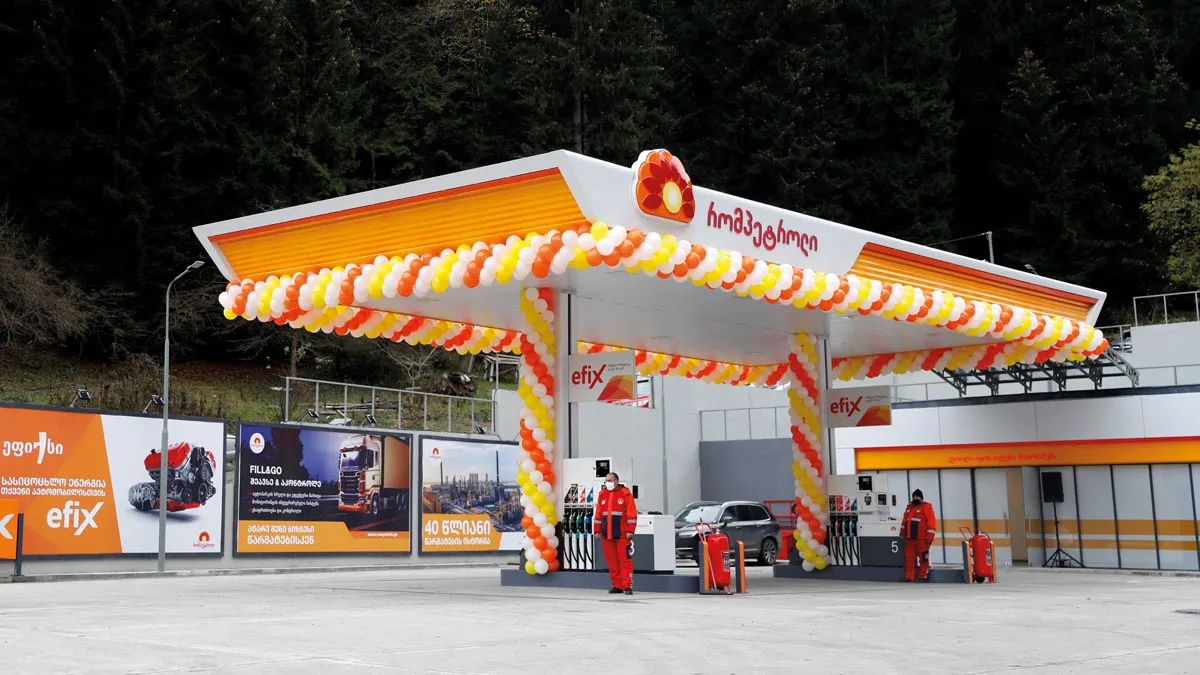 |
| Photo: Energy Industry Review |
Georgia is a state in the Southeastern region of the United States, bordered to the north by Tennessee and North Carolina; to the northeast by South Carolina; to the southeast by the Atlantic Ocean; to the south by Florida; and to the west by Alabama. Georgia is the 24th-largest in area and 8th-most populous of the 50 United States. Its 2020 population was 10,711,908, according to the U.S. Census Bureau. Atlanta, a "beta(+)" global city, is both the state's capital and its largest city. The Atlanta metropolitan area, with a population of more than 6 million people in 2020, is the 9th most populous metropolitan area in the United States and contains about 57% of Georgia's entire population.
Georgia is defined by a diversity of landscapes, flora, and fauna. The state's northernmost regions include the Blue Ridge Mountains, part of the larger Appalachian Mountain system. The Piedmont plateau extends from the foothills of the Blue Ridge south to the Fall Line, an escarpment to the Coastal Plain defining the state's southern region. Georgia's highest point is Brasstown Bald at 4,784 feet (1,458 m) above sea level; the lowest is the Atlantic Ocean. With the exception of some high-altitude areas in the Blue Ridge, the entirety of the state has a humid subtropical climate. Of the states entirely east of the Mississippi River, Georgia is the largest in land area.
As an iconic destination of the U.S. South, Georgia welcomes visitors with a wealth of unforgettable sights and experiences that can only be found here. Georgia stands out for how it lives up to expectations – and how it defines them. With big cities and small towns, a diverse population, thriving arts and culture, and a geographical range from the mountains to the beach, there’s a lot more to Georgia than its famous peaches. This state constantly redefines what it means to be Southern through the places, perspectives and people that make Georgia so unique.
Transportation
Water transportation determined the location of Georgia’s first cities. By the late 1820s, river steamers were carrying large cargoes of cotton downstream from collecting warehouses at the fall line to Savannah and other export centres.
Railroads replaced water transport in the late 1800s and early 1900s, but more recently navigation on 500 miles (800 km) of inland waterways was revived, and a state port authority created barge service at Augusta, Columbus, Bainbridge, Savannah, and Brunswick for the distribution of chemical, wood, and mineral products. Savannah is one of the leading ports on the southern Atlantic coast, in terms of tonnage of cargo handled, and has one of the country’s major container facilities.
Atlanta, originally called Terminus on the early railroad survey maps, had a near-optimum location for all but water transport, thus making it a hub of railroad transportation for the Southeast after the Civil War. With the advent of highways and then of air traffic, the city maintained its focal position. Three interstate highways intersect in downtown Atlanta. Hartsfield-Jackson Atlanta International Airport is one of the world’s busiest airports. It is also the hub of the state’s aviation network, a system that includes several other airports offering commercial service.
As of Monday morning, the average price for a gallon of regular unleaded gasoline in Georgia is $4.29 a gallon. That’s $1.39 more than this time last year.
Georgia remains the state with the lowest gas prices, most because of Gov. Brian Kemp’s suspension of the state gas tax. California has the highest gas prices at $6.30 a gallon for regular unleaded gasoline.
AAA mentioned some changes Georgians are making to save at the pump:
- 34% are driving less often
- 23% are driving shorter distances
- 23% are participating in fuel rewards programs
- 21% are doing combined trips
Other money-saving tips include:
- Shopping around for gas prices. You can do this through platforms like the AAA Mobile App or even GasBuddy.
- Pay for gas with cash instead of a credit card. You might not realize it but some retailers actually charge extra for customers who pay with their card.
- Enroll in a fuel savings program.
How to save fuel as you drive:
- Make sure your vehicle is maintained and at optimal fuel economy.
- Combine errands to limit driving time and extra trips.
- Take it slow. AAA said fuel economy diminishes significantly at highway speeds above 50 mph.
- Drive conservatively and avoid aggressive driving, as things like acceleration and speeding will reduce your fuel economy as well.
Related: Top 10 Cheapest Gas Stations In New York That You Keep in Mind
3. Oklahoma
 |
| Photo: Fox Business |
Oklahoma is a state in the South Central region of the United States, bordered by Texas on the south and west, Kansas on the north, Missouri on the northeast, Arkansas on the east, New Mexico on the west, and Colorado on the northwest. Partially in the western extreme of the Upland South, it is the 20th-most extensive and the 28th-most populous of the 50 United States. Its residents are known as Oklahomans (or colloquially "Okies"), and its capital and largest city is Oklahoma City.
A major producer of natural gas, oil, and agricultural products, Oklahoma relies on an economic base of aviation, energy, telecommunications, and biotechnology. Oklahoma City and Tulsa serve as Oklahoma's primary economic anchors, with nearly two-thirds of Oklahomans living within their metropolitan statistical areas.
Transportation
Oklahoma’s transportation facilities help account for its favourable record in attracting new industry. The state has well-developed networks of roads and highways and of railroads. Amtrak provides passenger train service between Oklahoma City and points in Oklahoma and Texas. Tulsa and Oklahoma City are the major transport hubs. The state’s major airport, Will Rogers World Airport, is located in Oklahoma City; regional facilities are in Lawton and Tulsa. A barge system carries cargo from Tulsa to the Gulf of Mexico by way of locks and dams on the Arkansas River.
Why Is Gas Cheaper In Oklahoma?
1. Taxes. The factor that is, perhaps, the simplest and easiest to understand is the fact that fuel taxes in Oklahoma are lower than in most states. Combined state and federal excise taxes and fees in Oklahoma are 35.4 cents, 5th lowest in the country. Alaska is lowest at 26.4 cents, while New York is highest at 67.4 cents.
2. Proximity to Pricing Groups. Oklahoma sits at the end of two fuel "pricing groups." The Gulf Coast Group moves gasoline north from refineries on the Gulf of Mexico, while Group 3 moves product south from Illinois, Missouri and Kansas. With Oklahoma situated at the end of the line for both of these groups, distributors here are sometimes able to get a discounted price for gasoline that is 'left over,' since the owners want to get rid of it and clear the line for additional product they have in the pipeline.
3. Boutique Fuels. In the summer months, many cities/states are required to sell special blends of gasoline in order reduce harmful emissions. Oklahoma is virtually surrounded by such cities with these special fuel requirements. The result is that sometimes gasoline producers are left with too much 'conventional' gas, and so they will drop the price to try and sell it in markets without special fuel requirements. Oklahoma City is almost always able to buy that cheaper, non-boutique fuel, and Tulsa frequently can, as well.
4. Central Location. Again, Oklahoma's geographical location -- in the center of the country -- helps us keep fuel costs down. As fuel is moved across the country from refineries to terminals, Oklahoma is often the beneficiary of cheaper fuel, because there is only so much space in the pipelines to ship product. If an owner of fuel doesn't sell as much as they expected, they will have extra fuel in the pipeline and won't be able to ship additional product until they sell what's already in the line. In an attempt to "empty their position" within the pipeline, they will sell the product as quickly as possible at the closest spot available. Oftentimes, Oklahoma is just that spot.
5. Competition. According to AAA Oklahoma, the Sooner state has more gasoline retail locations per capita than any other state in the nation. It's hard for a retailer to sell gasoline at an inflated price when the competitor on the opposite corner sees an opportunity to sell it for less.
With gas prices going up across the country, AAA Oklahoma is hoping to help save you a couple bucks the next time you go to fill up.
• Keep your car in top shape with routine inspections. A big one: underinflated tires are a drag on fuel economy.
• Map your route before you go to minimize unnecessary turnarounds and backtracking. Avoid peak traffic times and if possible go to “one-stop shops” where you can do multiple tasks (banking, shopping, etc.).
• Fuel economy peaks at around 50 mph on most cars, then drops off as speeds increase. Reducing highway speeds by 5 to 10 mph can increase fuel economy by as much as 14%.
• A car engine consumes one quarter to one-half gallon of fuel per hour when idling, but a warm engine only takes around 10 seconds worth of fuel to restart. Where safe to do so, shut off your engine if you will be stopped for more than a minute.
• Use “fast pass” or “express” toll lanes to avoid unnecessary stops or slowdowns on the highway.
• Only use premium gas in car that require it. Paying for premium gas for a vehicle that takes regular is a waste of money and is of no benefit to the vehicle.
Now remember that silver lining, Oklahoma gas prices are often the least expensive of any state in the nation.
While many Americans may adapt their daily habits to make up for higher gas prices, it likely won’t have as much of an impact on summer travel. AAA’s survey found that 52% of Americans have plans to take a vacation this summer. Of those, 42% said they would not consider changing their travel plans regardless of the price of gas.
4. Missouri
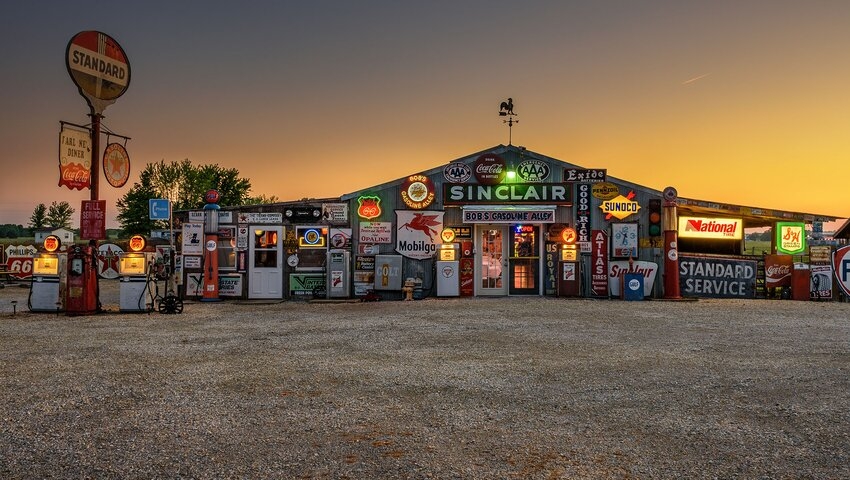 |
| Photo: USNews |
Missouri is a state in the Midwestern region of the United States. Ranking 21st in land area, it is bordered by eight states (tied for the most with Tennessee): Iowa to the north, Illinois, Kentucky and Tennessee to the east, Arkansas to the south and Oklahoma, Kansas and Nebraska to the west. In the south are the Ozarks, a forested highland, providing timber, minerals, and recreation. The Missouri River, after which the state is named, flows through the center into the Mississippi River, which makes up the eastern border. With more than six million residents, it is the 19th-most populous state of the country. The largest urban areas are St. Louis, Kansas City, Springfield and Columbia; the capital is Jefferson City.
Well-known Missourians include Chuck Berry, Sheryl Crow, Walt Disney, Edwin Hubble, Nelly, Brad Pitt, Harry S. Truman, and Mark Twain. Some of the largest companies based in the state include Cerner, Express Scripts, Monsanto, Emerson Electric, Edward Jones, H&R Block, Wells Fargo Advisors, Centene Corporation, and O'Reilly Auto Parts. Well-known universities in Missouri include the University of Missouri, Saint Louis University, Washington University in St. Louis. Missouri has been called the "Mother of the West" and the "Cave State", but its most famous nickname is the "Show Me State".
Transportation
The major flows of traffic within Missouri are from the east to west along the valley of the Missouri River and southward along the Mississippi River. Together, these two rivers provide more than 1,000 miles (1,600 km) of navigable waterways within the state, and they ultimately connect waterborne traffic with New Orleans. Missouri also is served by several interstate highways. Extension of these and other roads into the Ozarks since the late 20th century has greatly reduced the isolation of the region.
The state’s railroads are linked with most of the country’s major trunk lines, and St. Louis, Kansas City, and Jefferson City are served by Amtrak passenger service. Since 1910 the gradual abandonment of competing parallel lines and short lines built by mining and lumbering companies has led to a considerable reduction in Missouri’s railroad mileage. Following the 1976 Railroad Revitalization and Regulatory Reform Act, additional unprofitable branchlines were abandoned.
St. Louis and Kansas City are regional air hubs. International flights are available at both locations. The Springfield-Branson National Airport is a growing secondary (domestic) air hub serving the tourist centres and the fast-growing economy of southwestern Missouri.
Stacker compiled statistics on gas prices in Missouri using data from AAA. Gas prices are as of June 8. The state gas tax data is from World Population Review. Connecticut and New York have temporarily suspended gas taxes to help consumers while the cost of gas has increased.
Missouri by the numbers
- Gas current price: $4.53
- Week change: +$0.29 (+6.8%)
- Year change: +$1.78 (+64.5%)
- Gas tax: $0.17 per gallon (#47 highest among all states)
- Historical expensive gas price: $4.53 (6/8/22)
- Diesel current price: $5.18
- Week change: +$0.08 (+1.6%)
- Year change: +$2.21 (+74.5%)
- Historical expensive diesel price: $5.21 (5/11/22)
Missouri is actually among several Midwest states—including Kansas and Oklahoma—that are enjoying the lowest average prices per gallon for gas at the moment. Just because Missouri residents aren’t paying as much for gas as those in neighboring states like Illinois—$4.982/gal for regular!—doesn’t mean paying the new higher rates is any easier.
Still, a better question for Missouri residents to ask may be why prices continue to remain low compared to fuel prices in other states. One of the key factors, according to Patrick De Haan, head of petroleum analysis at Gas Buddy, is Missouri’s low motor fuel tax. At only 19.5 cents per gallon, it’s one of the lowest in the nation.
How to deal with Missouri’s gas prices
Though living in the Show Me State means you get lower gas prices than the national average, you likely still need to figure out how to scrape together the extra money for higher-priced fuel. We can’t all afford to run out and buy an electric car, but you have plenty of other options to ensure your car is as fuel-efficient as possible and to save yourself money overall.
Here are some simple tricks that can help you save money at the pump and the mechanic:
Keep to a regular maintenance schedule: One of the biggest factors contributing to your car’s ability to run efficiently is maintenance. Keep your oil changed, your tires aired up, and your filters clean to ensure you’re squeezing every possible mile out of each gallon.
Perform basic maintenance yourself: Even with today’s technologically advanced cars, it’s still pretty easy to learn how to do the basics. You don’t even need a garage to do some of the simplest tasks like changing air filters and wiper blades or replacing spark plugs. You can even get the kids involved by teaching them how to do simple maintenance.
Refinance your car loan: When you’re just thinking about gas prices, it’s easy to forget that an overall car payment is often one of the largest monthly expenses for most car owners. Anything you can save there will help offset the higher fuel costs, so don’t waste time and energy heading to the bank. In addition to saving hundreds on car insurance, Jerry users have the opportunity to benefit from their refinance services as well!
Go electric: It’s simpler and less expensive to go electric now than ever. Missouri’s incentives for businesses to install electric vehicle infrastructure have led to massive increases in available charging points, so skipping the pump altogether may be the simplest way to save on fuel costs.
Switch insurance companies: It’s easy to find yourself paying more than you should for car insurance. Though experts recommend we should shop for new car insurance every six months, most of us just stick with the same policy rather than bother with the hassle of comparison shopping, paperwork, and phone calls. When you switch with Jerry, you’ll get the lowest rate for the best coverage and new quotes sent to you every time your insurance comes up for renewal. No hassles, no extra work, no need to set a reminder—just savings!
| Reasons Why Gas Prices Differ By State 1. Taxes As that diagram on the right shows, the price of gas in the U.S. has four main components. About half the price is derived by the value of crude oil, followed by refining at 22%, taxes at 17%, and distribution and marketing at 10%. Because crude oil is traded on the global marketplace, it doesn't have a lot of impact on the difference between gas prices by state. In fact, top oil-producing states like Texas and North Dakota aren't among the states with the lowest gas prices because crude isn't the biggest driver of state-by-state difference. Instead, one of the biggest drivers of the gas prices difference between states is taxes. The U.S. average for state gas taxes is currently $0.48 per gallon. However, a number of states have gas taxes well over that average, which pushes gas prices in that state much higher than average. In fact, there's a pretty direct correlation between states with the highest gas taxes also having the highest gas prices and vice versa for those with the lowest taxes and lowest prices. For example, gas taxes in South Carolina are the third lowest at just $0.35 per gallon while those in California are the second highest at $0.66 per gallon, contributing to some of the difference in prices between the two book-end states. 2. Distribution and marketing Distribution and marketing costs also drive differences in gas prices. These are the costs for getting petroleum products from a refinery to a gas station and into a consumer's car. A factor driving these costs are pipeline tariffs, which are charged by pipeline operators to shippers that move gasoline in pipelines. Much like a toll road, the greater the distance traveled, the more expensive it is to ship the gas. It's one reason why southern states South Carolina, Mississippi, Alabama, Tennessee, and Louisiana have the lowest gas prices in the country as they are closer to America's oil-refining center along the Gulf Coast -- they benefit from lower distribution costs as the gas doesn't have to travel as far. Hawaii, on the other hand, has the second-highest gas price in the country due in part to higher transportation costs as its gasoline needs to be imported by ship, which is much more expensive than gas shipped via pipelines. 3. Refining A third factor is the actual cost of refining oil into gasoline, which can vary greatly according to a refinery's location. California, for example, is home to some of the stiffest environmental regulations in the country, which are higher than federal regulations and add to the cost of refining gasoline in the state. Furthermore, its refineries are almost always running at full capacity just to meet demand so when one does get shut down, as happened earlier this year, it leads to a spike in the state's gas price. Meanwhile, states that either have less stringent regulations on their refineries, or import a bulk of their gas from low-cost refining states, tend to have lower gas prices. That's actually another driving force behind lower gas prices in the Southeastern U.S. as Gulf Coast states Texas and Louisiana have low-cost refineries, which is why both are among the top ten states with lowest gas price. Further, both states export their gas to neighboring southern states, including South Carolina, for example, which is when combined with lower taxes is why several states in the south have much lower gas prices than their northern or western peers. |
5. Arkansas
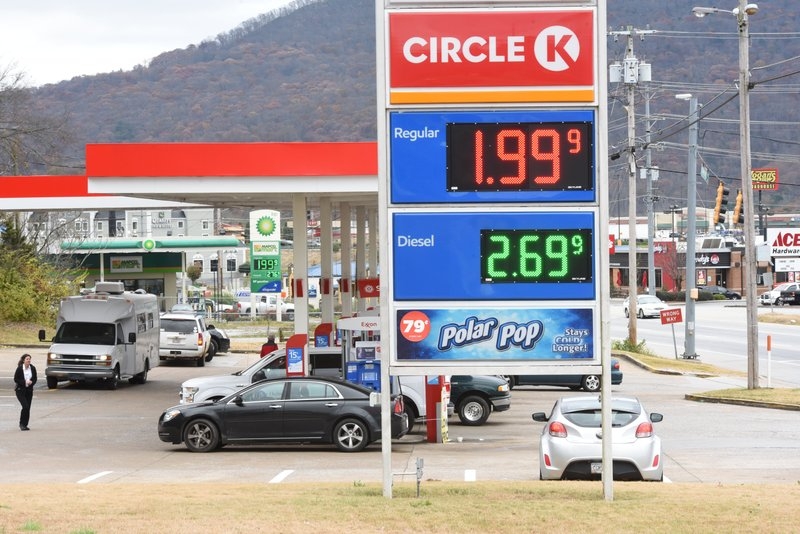 |
| Photo: Arkansasonline |
Arkansas is a landlocked state in the South Central United States. It is bordered by Missouri to the north, Tennessee and Mississippi to the east, Louisiana to the south, and Texas and Oklahoma to the west. Its name is from the Osage language, a Dhegiha Siouan language, and referred to their relatives, the Quapaw people. The state's diverse geography ranges from the mountainous regions of the Ozark and Ouachita Mountains, which make up the U.S. Interior Highlands, to the densely forested land in the south known as the Arkansas Timberlands, to the eastern lowlands along the Mississippi River and the Arkansas Delta.
Arkansas's culture is observable in museums, theaters, novels, television shows, restaurants, and athletic venues across the state. Notable people from the state include politician and educational advocate William Fulbright; former president Bill Clinton, who also served as the 40th and 42nd governor of Arkansas; general Wesley Clark, former NATO Supreme Allied Commander; Walmart founder and magnate Sam Walton; singer-songwriters Johnny Cash, Charlie Rich, Jimmy Driftwood, and Glen Campbell; actor-filmmaker Billy Bob Thornton; poet C. D. Wright; physicist William L. McMillan, a pioneer in superconductor research; poet laureate Maya Angelou; Douglas MacArthur; musician Al Green; actor Alan Ladd; basketball player Scottie Pippen; singer Ne-Yo; Chelsea Clinton; actress Sheryl Underwood; and author John Grisham.
Transportation
Several major railroads provide freight service within Arkansas and to major cities in the central United States. Airline service is provided by national carriers from a number of airports to any point in the country. The busiest of the state’s airports are those at Little Rock and Bentonville. The McClellan-Kerr Arkansas River Navigation System (completed in 1971) for navigation and flood control is among the largest civil works projects ever undertaken by the U.S. Army Corps of Engineers. The system basically consists of a series of pools that are connected and regulated through locks and dams; together, the pools allow access to most of the country’s navigable inland waterways.
| AAA reports Arkansas gasoline now averages $4.49 a gallon, up from yesterday’s $4.48. This a steady trend up beginning with Monday’s $4.40 and Tuesday’s $4.45 per-gallon numbers. Each day has been a highest-ever price. A month ago, gasoline was $3.93. Diesel has the same climb, today at $5.29 after yesterday’s $5.28, that up from Tuesday’s $5.26. This is getting very close to the diesel highest-ever price of $5.30 set May 11. Arkansas gasoline a year ago averaged $2.73 a gallon, with diesel at $3.04. The gas price averages aren’t consistent throughout the whole state, though. Lafayette County—which includes Lewisville, Stamps, and Bradley—has the highest gas prices across the state with an average of $4.409. In general, the entire southwest corner of Arkansas has the worst gas prices, while Northwest and Central Arkansas are currently enjoying the best prices—as low as $3.99 in Fort Smith and the rest of Sebastian County. |
Tips on saving fuel, money in Arkansas
Stay on top of maintenance: After paying a pretty penny at the pump, you might be tempted to skip your $30 oil change—but not so fast. That could lead to bigger repairs and expenses down the line! Save your money by keeping up with your car’s regular maintenanceneeds.
Work on your DIY repair skills: Head to the professionals for major issues like a failing transmission or broken fuel pump, of course—but you can cut down on your ownership costs by learning a few handy repair skills to do at home. Tasks like flushing your radiator fluid or replacing your air filters are fairly simple to do yourself.
Refinance your loan: A huge chunk of your car expenses probably goes to paying your auto loan each month, but you may be able to save money by refinancing your loan with a new lender. Don’t know where to start? Jerry offers refinancing services to users who shop for insurance in the app!
Go electric: The upfront cost may be daunting, but if you can swing it, switching to an electric car will eliminate your need for gas altogether. On top of that, you could cash in with federal and local electric vehicle incentives.
Find a better insurance policy: Just like gas prices, insurance rates go up and down pretty often. That’s why experts recommend shopping for a new car insurance policy every six months.
6. Mississippi
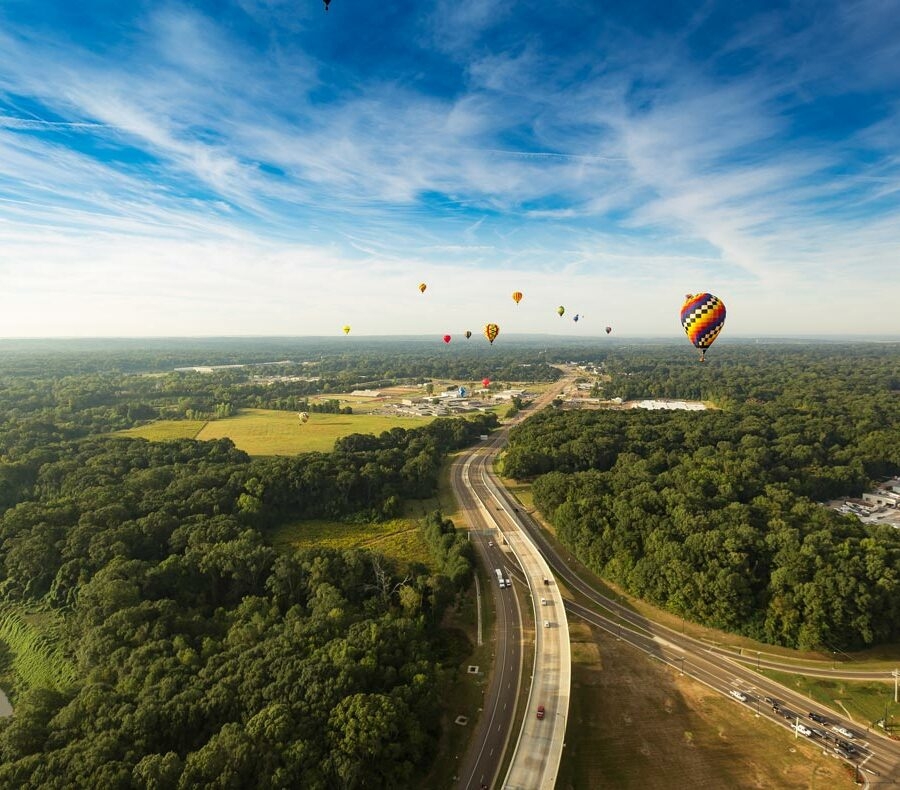 |
| Photo: Getty Images |
Mississippi is a state in the Southeastern region of the United States, bordered to the north by Tennessee; to the east by Alabama; to the south by the Gulf of Mexico; to the southwest by Louisiana; and to the northwest by Arkansas. Mississippi's western boundary is largely defined by the Mississippi River. Mississippi is the 32nd largest and 35th-most populous of the 50 U.S. states and has the lowest per-capita income in the whole US. Jackson is both the state's capital and largest city. Greater Jackson is the state's most populous metropolitan area, with a population of 591,978 in 2020.
Mississippi is almost entirely within the Gulf coastal plain, and generally consists of lowland plains and low hills. The northwest remainder of the state consists of the Mississippi Delta, a section of the Mississippi Alluvial Plain. Mississippi's highest point is Woodall Mountain at 807 feet (246 m) above sea level adjacent to the Cumberland Plateau; the lowest is the Gulf of Mexico. Mississippi has a humid subtropical climate classification.
Transportation
Rail transportation, a large segment of which is entirely intrastate, has generally declined since the late 20th century. However, the state’s secondary highway system has improved significantly. The heaviest volume of traffic is along the Gulf Coast, where numerous north–south and east–west routes converge.
Gulfport and Pascagoula can accommodate oceangoing ships, and low-draft oceangoing vessels can travel up the Mississippi River to Natchez, Vicksburg, and Greenville. Barge traffic moves on the Mississippi, Pearl, and Yazoo rivers. The Gulf Intracoastal Waterway passes through the Mississippi Sound along the Gulf Coast.
Mississippi has scores of public and private airports. Most large cities offer commercial service. There are international airports in the Jackson and Gulfport-Biloxi areas.
The United States does not import much gas from Russia — less than 10%. But, U.S. sanctions do add to the issues with the overall global market.
Mississippi ranks lower with an average price of $4 per gallon. However, lower prices can still be financially impactful given states' varying economies.
Like much of the central US, Mississippi’s gas prices are currently among the lowest in the nation, making them easily affordable for most residents.
Still, Mississippi is suffering from the same price increases caused by gas and oil import bans and supply chain shortages as every other state. The difference is that Mississippi residents are benefitting from two things that ensure their per-gallon prices don’t soar as high as those in states like California: low motor fuel taxes and close proximity to refineries.
At just 0.18 cents per gallon, Mississippi has one of the lowest gas taxes in the nation. Plus, sharing a border with Louisiana, which is home to 19 oil refineries, means it costs less to ship fuel to Mississippi than other states.
Tips to save gas in Mississippi
Don’t skip regular maintenance: One of the easiest things you can do to maintain your car’s efficiency is to keep up with routine maintenance. Nowadays, it may be tempting to pocket the money you’d spend on an oil change, but that’ll end up costing you more in the long run.
Do the basic stuff yourself: You don’t need to be a computer whizz to handle basic vehicle maintenance. Changing air filters, wiper blades, or replacing spark plugs on your own can save you loads on labor costs. You can even get the kids involved by passing down some basic car knowledge!
Refinance your car loan: For many of us, our car payment is one of the biggest monthly expenses. Why not see if you can cut yours down?
Plug into electric: This would’ve been a ridiculous suggestion five years ago, but with the increased availability of electric and plug-in hybrid cars, it’s easier and more affordable than ever to get yourself into a ride that doesn’t even need gas.
Review your car insurance: Many of us wind up paying too much for car insurance because it’s easier than shopping for new coverage.
7. Nebraska
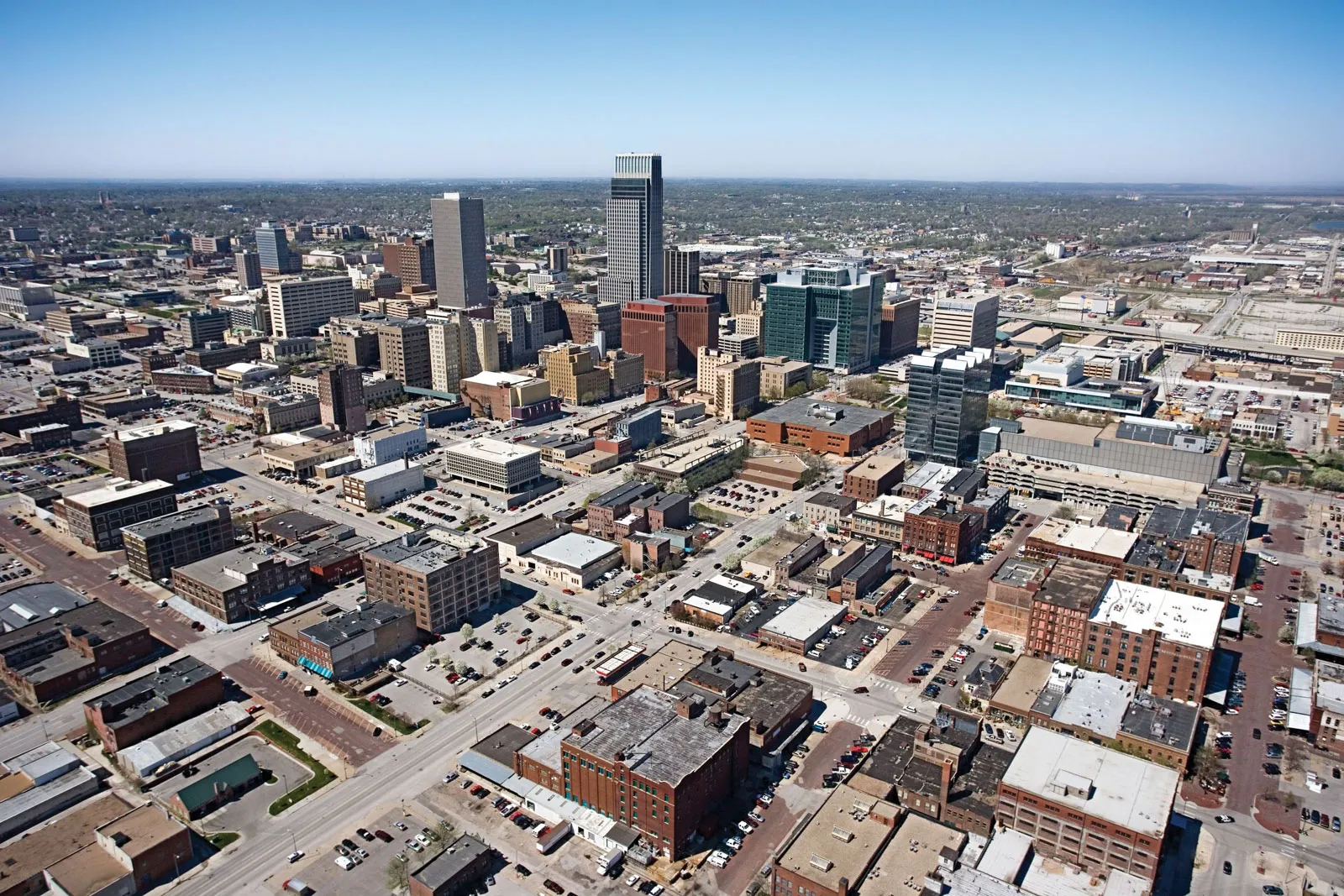 |
| Photo: Britannica |
Nebraska is a state in the Midwestern region of the United States. It is bordered by South Dakota to the north; Iowa to the east and Missouri to the southeast, both across the Missouri River; Kansas to the south; Colorado to the southwest; and Wyoming to the west. It is the only triply landlocked U.S. state.
Nebraska is composed of two major land regions: the Dissected Till Plains and the Great Plains. The Dissected Till Plains region consists of gently rolling hills and contains the state's largest cities, Omaha and Lincoln. The Great Plains region, occupying most of western Nebraska, is characterized by treeless prairie. Nebraska has two major climatic zones. The eastern two-thirds of the state has a humid continental climate (Köppen climate classification Dfa); a unique warmer subtype considered "warm-temperate" exists near the southern plains, which is analogous to that in Kansas and Oklahoma, which have a predominantly humid subtropical climate.
Transportation
Nebraska is located on some of the most important arteries linking east and west. Within the state, traffic in the east tends to flow toward Omaha, Lincoln, and Sioux City, Iowa, as well as toward the cities in the Platte valley. Much of western Iowa lies within the trading area of metropolitan Omaha.
Several railroads also operate in the state, and both Omaha and Lincoln are served by major rail lines. Omaha is an important port for commercial barge traffic on the Missouri. Air carriers serving Nebraska include both major national lines and those that provide feeder service to the smaller communities of the state. Eppley Airfield in Omaha is one of the country’s largest airports and the largest in Nebraska. It offers nonstop flights to many domestic cities.
Ways to save money at the gas pump in Nebraska
As the fighting between Ukraine and Russia continues, filling up the gas tank is becoming more stressful. With nicer weather just around the corner, it’s threatening even higher gas prices.
Here are some tips from AAA on saving some money at the gas pump.
- Keep tires inflated properly. Under-inflated tires can decrease your gas mileage by as much as three percent.
- Keep an eye on the speed limit. Every 5 miles-per-hour you drive above 60 is like paying an additional 15-cents per gallon of gas.
- Take advantage of rewards programs. It might not seem like much, but in the long term it can save a significant amount.
- Avoid idling. Letting your car idle for more than 10 seconds uses more gas than turning it on or off.
“There are a bunch of little things that you can do and they do add up,” AAA Public Affairs Specialist, Meredith Mitts said, “Whether that’s using your fuel rewards, making the most of your trip, carpooling or not letting your car run as long. I know it doesn’t sound like it’s going to save a lot, but those things do add up especially over time and if you’re doing multiple things regularly.”
8. Minnesota
 |
| Photo: MPR News |
Minnesota is a state in the upper Midwestern United States. It is the 12th largest U.S. state in area and the 22nd most populous, with over 5.75 million residents. Minnesota is home to western prairies, now given over to intensive agriculture; deciduous forests in the southeast, now partially cleared, farmed, and settled; and the less populated North Woods, used for mining, forestry, and recreation. Roughly a third of the state is covered in forests, and it is known as the "Land of 10,000 Lakes" for having over 14,000 bodies of fresh water of at least ten acres. A little over half of Minnesotans live in the Minneapolis–Saint Paul metropolitan area, known as the "Twin Cities", the state's main political, economic, and cultural hub. The Twin Cities is the 16th largest metropolitan area in the U.S. Other minor metropolitan and micropolitan statistical areas in the state include Duluth, Mankato, Moorhead, Rochester, and St. Cloud.
Since the late 20th century, the core of Minnesota's economy has diversified, shifting from traditional industries such as agriculture and resource extraction to services, finance, and health care; it is consequently one of the richest in terms of GDP and per capita income. The state is home to 11 federally recognized Native American reservations (seven Ojibwe, four Dakota), and remains a center of Scandinavian and German cultures with an influence of Lutheranism. In recent decades, Minnesota has become more multicultural, driven by larger domestic migration and diverse foreign immigration from places like Latin America, Asia, the Horn of Africa, and the Middle East.
Transportation
Minnesota’s transportation infrastructure is centred on the Twin Cities area. Regional and transcontinental rail and highway systems radiate outward from the Twin Cities. The rail system of northeastern Minnesota carries iron ore and taconite products for transshipment by boat at the Lake Superior ports of Duluth and Superior, Wis. Wheat from the Dakotas and Montana also has been an important product transshipped from rail to boat at Duluth.
Since the opening of the Great Lakes waterway to ocean vessels in 1959, products of the Upper Midwest have been carried directly to locations throughout the world. River transportation was the first important mode for the movement of both passengers and goods in many parts of the state. Barges on the Mississippi carry bulk products to and from the major inland ports at St. Paul and Minneapolis. Carried upstream are such bulk products as coal, oil, and salt; grain, sand, and gravel are transported downstream.
The Twin Cities area, served by several commercial airlines, is also the air hub of the Upper Midwest. The Minneapolis–St. Paul International Airport is supplemented by a satellite network of additional airports around the state.
Across Minnesota, there isn’t a ton of variance in gas prices. Hennepin County, home to the Minneapolis & St. Paul metro, anchors the state average at $4.24/gal. The highest prices will be found along the north shore of Lake Superior at $4.35, while the lowest prices are on the Iowa border at $4.09/gal.
Pro Tip You’re better off biting the bullet at your closest gas station than blindly driving down the road in search of a lower price.
Tips to save gas driving in Minnesota
Lobby your representatives: Minnesota congressional representativesare considering waiving the state gasoline tax from Memorial Day to Labor Day to encourage summer travel—lobby your local leader to pass the gas tax holiday!
Work from home: If COVID didn’t permanently move your work to a remote environment, these gas prices might give you another chance. If possible, limiting your commute by working from home will save you gas money.
Use E15: In partnership with the EPA, President Biden recently announced increased access to E15, also known as Unleaded 88. You can save anywhere from 5 to 40 cents a gallon by opting for E15 at one of Minnesota’s 420 gas stations that offer it.
Don’t skip regular maintenance: Staying on top of your maintenance schedule is crucial to avoiding more considerable repair expenses down the road.
Learn some DIY car repair skills: Instead of pushing off your oil change, learn to do it yourself—YouTube has endless videos on DIY repairs.
Refinance your car loan: Lower your monthly payments or renegotiate your interest rate by refinancing your car loan.
Go electric: If you’re sick of the gas pump altogether, you can always take things into your own hands by transitioning to an electric vehicle. It only costs about $30 to $60 a month to charge your EV, and you could qualify for up to $7,500 in energy incentives.
9. North Dakota
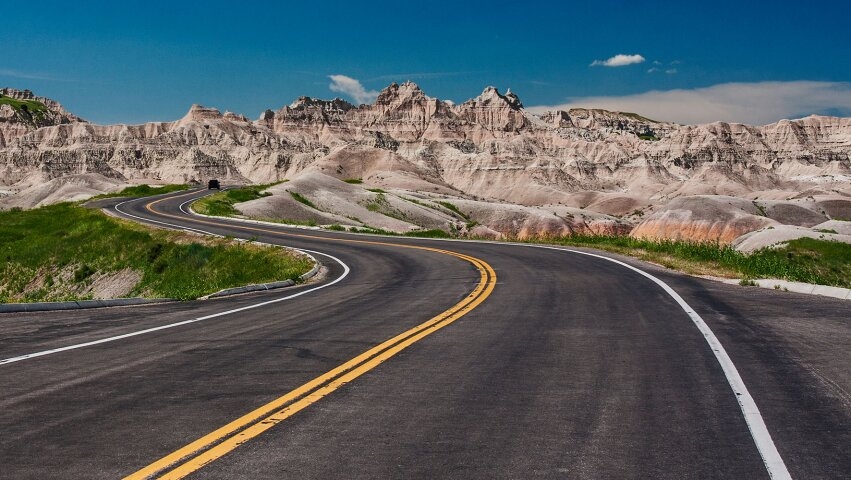 |
| Photo: USNews |
North Dakota is a U.S. state in the Upper Midwest, named after the indigenous Dakota Sioux. North Dakota is bordered by the Canadian provinces of Saskatchewan and Manitoba to the north and by the U.S. states of Minnesota to the east, South Dakota to the south, and Montana to the west. It is believed to host the geographic center of North America, Rugby, and is home to the tallest man-made structure in the Western Hemisphere, the KVLY-TV mast.
Beginning in the mid 20th century, North Dakota's rich natural resources became more critical to economic development; into the 21st century, oil extraction from the Bakken formation in the northwest has played a major role in the state's prosperity. Such development has led to unprecedented population growth (along with high birth rates) and reduced unemployment, with North Dakota having the second lowest unemployment rate in the U.S. (after Hawaii). It ranks relatively well in metrics such as infrastructure, quality of life, economic opportunity, and public safety.
Transportation
Intrastate and interstate traffic moves primarily east-west through the state. Fargo is a main stopover point on the way to other towns in North Dakota, to Minneapolis–St. Paul, the nearest metropolis, and to the Pacific Northwest.
North Dakota had a well-developed system of rail lines, but railroad deregulation in the 1970s and ’80s made it easier for railways to abandon track, especially grain elevator-oriented branchlines. Loss of such branchlines became a common occurrence throughout the state as the agricultural sector began to decline. Service was reduced except to selected inland grain terminals. Increasingly, trucks are transporting commodities, but mainline rail freight service continues to carry grain and coal. By the end of the 20th century, various short-line railroad companies had developed branchlines for transporting grain. Passenger rail service is limited, as is commercial bus service. Some counties in the state (especially those with aging populations) have begun providing small buses that travel from rural areas and small towns to larger retail centres.
There are commercial airports in North Dakota’s larger cities and private airfields throughout the state. North Dakotans generally must fly through Minneapolis–St. Paul or Denver as the first and last leg of a trip.
The average price in North Dakota is $3.89/gal. Minnesotans are paying slightly more with the state average of $3.95/gal. When fueling up, every penny counts.
Tips to save gas driving in North Dakota
1. There’s an app!
Phone applications and websites like Gas Buddy, Gas Guru, and AAA Mobile report gas prices close by. According to Gas Buddy, using an app to check prices before going to the pump can save drivers up to $0.25/gal.
2. Grocery shop and get rewards
Some local grocery stores like Hornbacher’s offer gas rewards for their customers. When someone spends $10 or more at Hornbacher’s, they can earn cents off per gallon, with a maximum of $0.12 off per gallon. The catch is the rewards can only be used at Holiday Stations in North Dakota and Minnesota.
3. Consider carpooling or public transportation
Sharing a ride with co-workers, classmates, or friends can help save money over time. Whether it’s taking turns driving or splitting the gas bill down the middle, the saved dollars can rack up for all parties involved. Public transportation provider, MATBUS, offers rides Monday through Saturday with routes traveling around Fargo, West Fargo, Moorhead, and Dilworth.
4. Car maintenance
When’s the last time you got your car checked out? Experts say a well-maintained car tends to get better gas mileage. Getting an oil change and replacing the air filter can help save trips to the pump.
10. Colorado
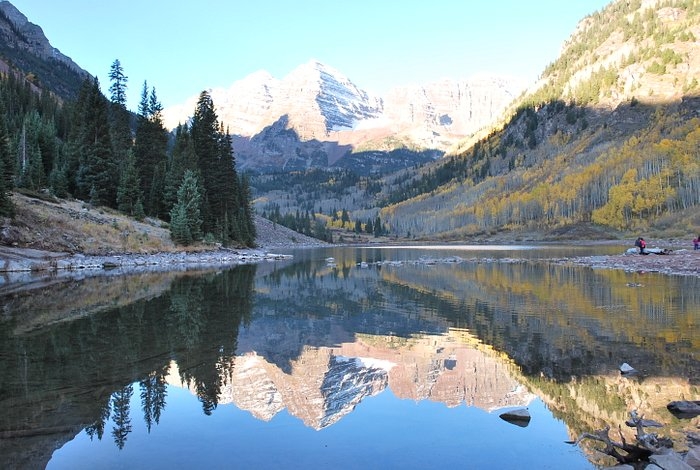 |
| Photo: TripAdvisor |
Colorado is a state in the Mountain West subregion of the Western United States. It encompasses most of the Southern Rocky Mountains, as well as the northeastern portion of the Colorado Plateau and the western edge of the Great Plains. Colorado is the eighth most extensive and 21st most populous U.S. state. The 2020 United States Census enumerated the population of Colorado at 5,773,714, an increase of 14.80% since the 2010 United States Census.
Denver is the capital of and most populous city in Colorado. Residents of the state are known as Coloradans, although the antiquated "Coloradoan" is occasionally used. Colorado is a comparatively wealthy state, ranking eighth in household income in 2016, and 11th in per capita income in 2010. It also ranks highly in the nation's standard of living index. Major parts of the economy include government and defense, mining, agriculture, tourism, and increasingly other kinds of manufacturing. With increasing temperatures and decreasing water availability, Colorado's agriculture, forestry, and tourism economies are expected to be heavily affected by climate change.
Transportation
Colorado's primary mode of transportation (in terms of passengers) is its highway system. Interstate 25 (I-25) is the primary north–south highway in the state, connecting Pueblo, Colorado Springs, Denver, and Fort Collins, and extending north to Wyoming and south to New Mexico. I-70 is the primary east–west corridor. It connects Grand Junction and the mountain communities with Denver, and enters Utah and Kansas. The state is home to a network of US and Colorado highways that provide access to all principal areas of the state. Many smaller communities are connected to this network only via county roads.
Colorado's freight railroad network consists of 2,688 miles of Class I trackage. It is integral to the U.S. economy, being a critical artery for the movement of energy, agriculture, mining, and industrial commodities as well as general freight and manufactured products between the East and Midwest and the Pacific coast states.
How to save gas driving in Colorado
Fill your tires
Make sure there's enough air in the tires. Underinflated tires create more rolling resistance with the pavement, thereby reducing gas mileage. Inflate your tires to the pressure recommended on the inside of your driver's side door. Check them periodically with a tire pressure gauge. “Typically, your gas mileage is going to be impacted by about 5% to 10% if you don't have proper inflation,” said David Bennett, manager of repair systems for AAA. But don't over-inflate. Doing so could cause tires to wear out more quickly.
Don't skip on service
Properly maintain your vehicle. Follow the manufacturer's recommendations for oil and other fluid changes and for replacing air and other filters. Replacing spark plugs at the proper intervals can help, too. “The vehicle is going to operate at its peak efficiency” with good maintenance, Bennett said. It will cost between $219 and $268 for new spark plugs on, say, a 10-year-old Ford F-150 pickup with a 3.7-liter V6, according to Repairpal.com.
Drive slower
Watch your speed. AAA says fuel economy peaks around 50 miles per hour on most vehicles, then drops as speed rises. Reducing highway speeds by 5 mph (8 kilometers per hour) to 10 mph improves gas mileage by up to 14%.
Outline your trip
Plan your route in advance. Try to minimize backtracking. Do multiple tasks on each trip. Avoid rush hours and other peak travel times.
Turn your engine off
Don't idle too much. An engine burns one-quarter to a half-gallon (1.9 liters) of gas per hour when idling, but a warm engine needs only around 10 seconds worth of fuel to restart, according to AAA. So when safely possible, shut your engine off if you'll be stopped for more than a minute. Many new vehicles do this on their own. Bennett says owners shouldn't disable their new “stop-start” system.
Avoid stopping frequently
Coast to stoplights. Time your travel to keep rolling and avoid unnecessary stops. Cars must consume a lot of fuel to get moving from a dead stop.
 Top 10 Cheapest Places To Buy Petrol And Diesel In Canada Top 10 Cheapest Places To Buy Petrol And Diesel In Canada Let's check top 10 cheapest places to buy petrol and gas in Canada. |
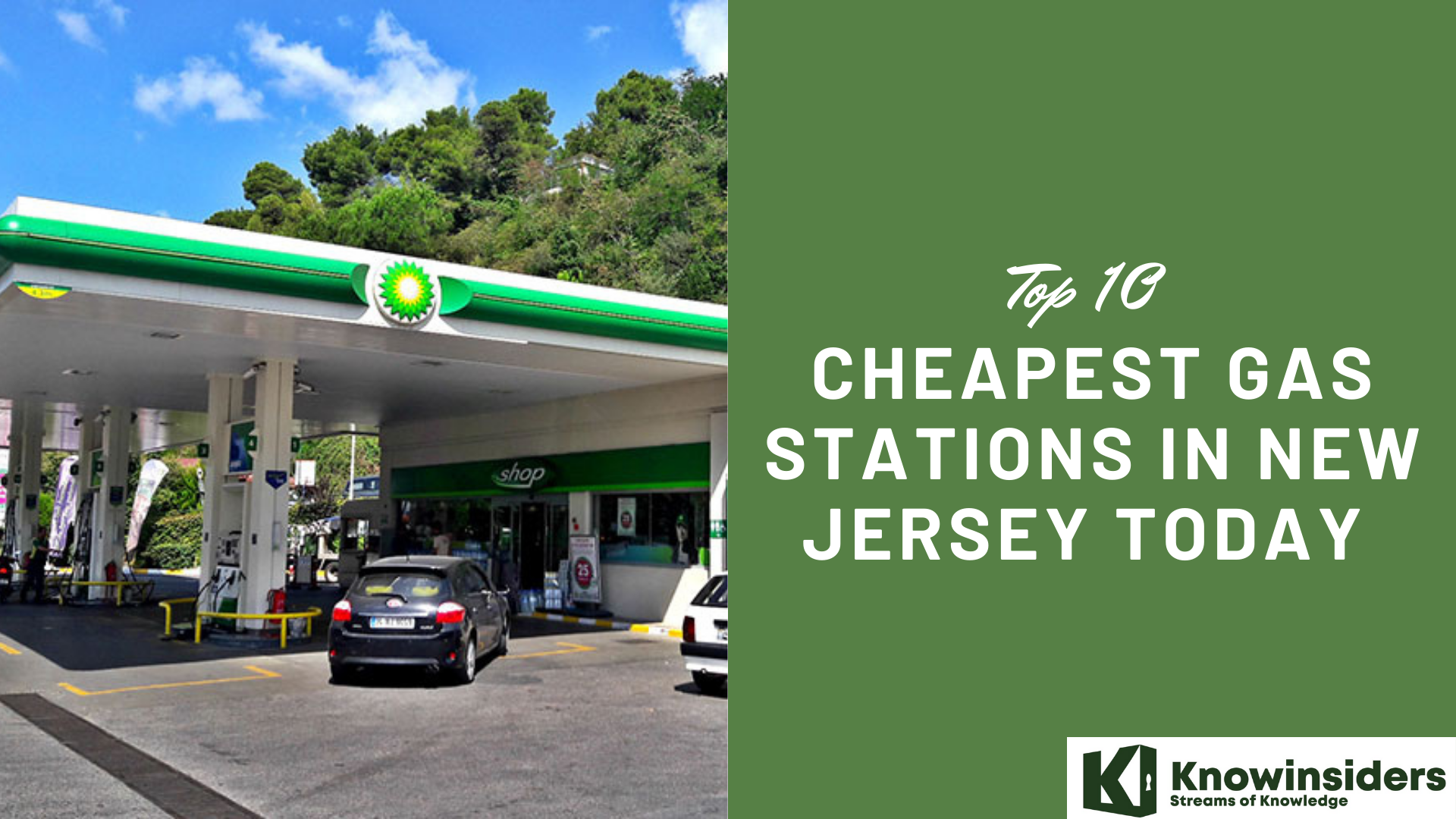 Top 10 Cheapest Gas Stations In New Jersey That You Keep in Mind Top 10 Cheapest Gas Stations In New Jersey That You Keep in Mind With New Jersey being one of the states with the highest gas prices in the United States, these are the 10 cheapest gas stations you ... |
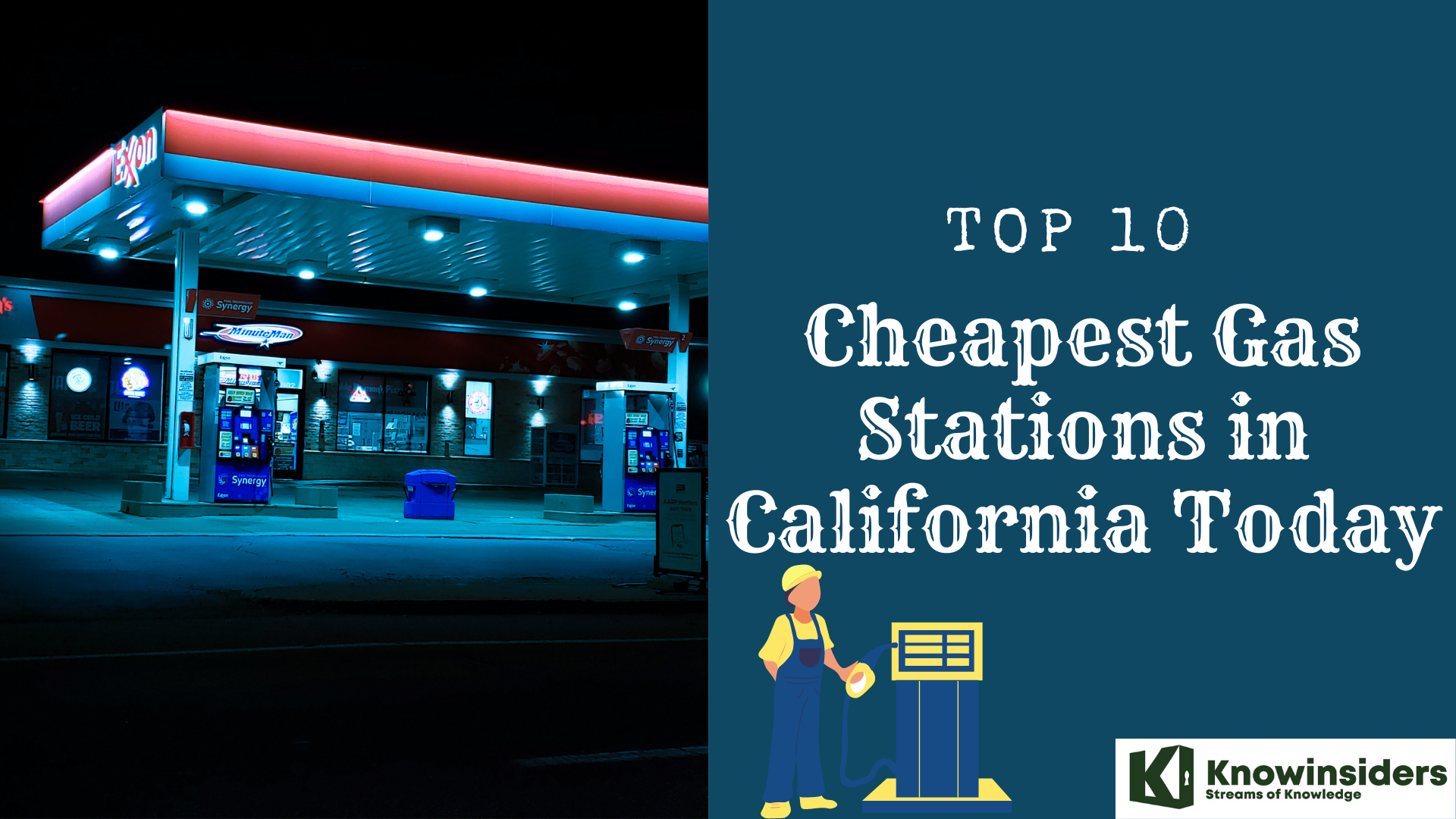 Top 10 Cheapest Gas Stations in California You Keep in Mind Top 10 Cheapest Gas Stations in California You Keep in Mind The state with the most expensive gas prices in the US is always California. Find out the list of the top 10 cheapest gas stations ... |
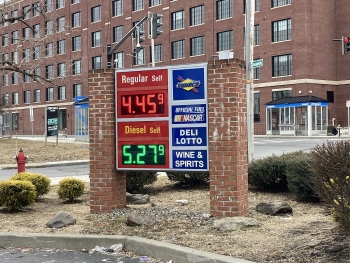 Gas Prices Today June 2, 2022: Cheapest Places to Buy Petrol in the US Gas Prices Today June 2, 2022: Cheapest Places to Buy Petrol in the US Find out the cheapest and highest gas stations today (June 2, 2022) in the United States: The national average for regular gasoline climbed by five ... |
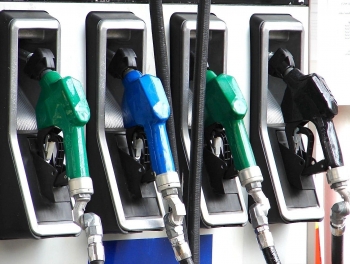 7 Ways to Save on Gasoline and Purchasing the Cheapest Gas during Prices Rising 7 Ways to Save on Gasoline and Purchasing the Cheapest Gas during Prices Rising The average price of a gallon of self-serve regular gasoline in US rose Saturday for the 25th consecutive day, increasing 1.4 cents to $3.79 — ... |






















